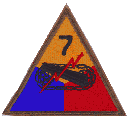

|
Two men of C/23 (Company C, 23rd Armored Infantry Battalion) of 7th Armored Division died just west of Longueville, France on 24 Sep 1944 when a mortar round hit directly on their foxhole. (Note that this is not their official date of death, which is 25 Sep, but is the date recorded in his diary by eye-witness John Margreiter.) These were Pvt. Ferdinand F. Perri of Philadelphia and Pvt. Alfonso Ponce of Los Angeles. Their remains have never been found and identified -- two of the many 7AD men lost in WWII never found and identified. After the war, C/38 veteran John Margreiter saw the event and sent three letters to the Army after the war, in order to help try to find their remains. Further searches failed to find them. But John Margreiter's letters, including a hand drawn map, provide great detail about the events of that day, including the disposition of all three rifle companies of 23 AIB at Longueville, in an attempt, originating from further west at Bouxieres-sous-Froidmont, to cross the Seille River against heavy German opposition -- an attempt that did not succeed. By the end of the day, all 7AD troops were pulled back west across the Moselle River, in preparation for a march north to the Netherlands, never to return to France. This web page provides John Margreiter's letters and links to the Individual Deceased Personnel Files of Perri and Ponce. It also includes consideration of the possibilities for finding and identifying their remains. |
|
Pvt. Alfonso Ponce of Los Angeles |

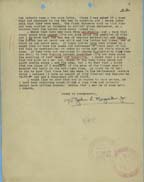
|
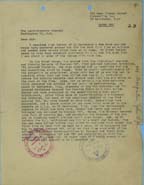

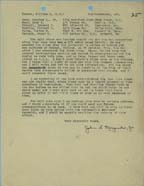
|
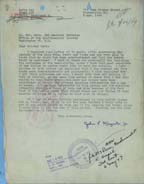
|
In an e-mail 19 Jun 2001 to 7th Armored Division Association Historian Wesley Johnston, John Margreiter gave this additional information:
"Ferdinand F. Perri was killed along with his foxhole mate (Ponce) by a direct hit from a mortar round near Bouxierre-suos-Froidment, France. After the round hit I attempted to render 1st Aid (their hole was 3-4 yards from mine), but all I found were body parts in the trees above where the hole had been. I attempted to locate the sight where they were killed in 1991. At that sight, I unearthed two live US hand grenades. I have pictures of them."
|
All information about the location begins with the map that John Margreiter drew in his second letter. Click on the image for the full-size version. 
Based on John Margreiter's letters and map, an on-site investigation was made in Apr 1950. The 25 Apr 1950 report by H. E. Warner is in the IDPFs of both Perri (begins on p 11) and Ponce (p 12). On page 2, Warner wrote:
There are two points of reference on John Margreiter's map: (1) the road to Bouxieres where the men are indicated as having been in their foxhole when killed and (2) the combination of the town, stream and buildings. It is also important that John Margreiter indicated a stream and not a river. But was what he thought was a stream really the Seille River? Probably not: Sep 1944 was extremely wet, so that the Seille would probably have been noticably larger than a stream. Since he was in C/23 and an eye-witness to the mortar shell hitting the foxhole, the most credible reference is the road to Bouxieres. The question then becomes where along that road the foxhole was. And that is really uncertain. Modern Google Maps map and aerial views do NOT necessarily show the streams and roads and buildings as they were in 1944. And I have no maps or aerial photos of this area in 1944. The bottom line at this point, with the resources available to me, I can only make an educated guess at the location. 
|
|
John Margreiter wrote (21 May 1948) that he "crawled over to their hole and saw that one had been completely blown to bits and the the other was completely buried." It seems likely that the buried man had most likely also been "blown to bits". Thus there was little left to recover. And because that area was under fire and because all of 7AD was pulled back across the Moselle later that day, no attempt was made to recover the remains by 23 AIB. It seems most likely that the foxhole was later filled in, possibly including the bits of the man who had not already been buried by the explosion, so that even when later US troops were in the area there would have been no foxhole to use and discover the remains. Graves Registration operating from the Andilly temporary US military cemetery recovered unidentifiable remains 2 Aug 1945 from a mine field about 2 miles northeast of Longueville. The remains were tagged as Unknown X-72. (Click here to see the X-file for Andilly X-72.) However, after comparison with the IDPFs of Perri and Ponce, there are multiple reasons Andilly X-72 is almost certainly someone other than Perri or Ponce.
The bottom line is that the remains of Perri and Ponce most likely remain -- in bits and pieces -- in the now-covered foxhole where they were killed. It seems unlikely that they were previously recovered, so that they would now be buried as Unknowns, although that cannot be ruled out. More likely, their foxhole was filled in, further burying the one that was already "completely buried". So it seems that they most likely have never been found and recovered. Finding them is still possible, but it will not be easy. |
Active overview of all pages at the 7th Armored Division web site